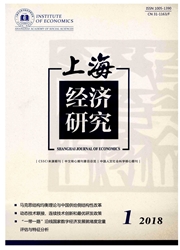

 中文摘要:
中文摘要:
Krugman认为,最终需求在制造业中心-外围结构的形成中起着决定性作用,而本地制成品的需求不仅取决于该地内部的消费规模,还取决于其对所有市场的通达性,二者相加即为市场潜能。本文引入Krugman市场潜能这一关键变量,分析市场效应对我国制造业空间集聚的影响。实证方面,通过中国1997年八大区域间投入产出表建立贸易引力模型,从而计算出市场潜能。每个省份的市场潜能可分为三部分——省内需求形成的市场潜能,区域内其他省份需求形成的市场潜能和区域外需求形成的市场潜能。在分析市场潜能与我国制造业空间集聚的关系时,实证证明Krugman市场潜能对制造业的产值分布具有显著为正的影响。同时,本文针对市场潜能内部结构进行了分析,得出区域内市场潜能(含本省内部市场潜能和区域内其他省份需求形成的市场潜能)所占比重越高,制造业产值越高。上述结论对于中西部地区进一步发展制造业具有一定的启示,在区域经济一体化的大背景下,中西部地区构建本地区的经济增长极和中心城市,形成和完善一体化的区域市场,能够更好的促进当地制造业发展。
 英文摘要:
英文摘要:
According to Krugman's theory,market potential,including local market capacity and access to regional consumer market,plays a decisive role in manufacturing enterprise location choice and industry Core-peripheral distribution.The source of market potential should include three parts: local market capacity,demand from interregional area and demand from outside regional area.The data we use is 1997 multi-regional input-output table and the focus of the paper is to study the market potential's influence on the manufacturing industry spatial agglomeration with Krugman's "market potential".The conclusion is that market potential makes significant positive contribution to the manufacturing agglomeration and the higher of the ratio of interregional market potential,the higher of local manufacturing scale,which suggest that more large cities and metropolis should be developed in middle and western area in China.
 同期刊论文项目
同期刊论文项目
 同项目期刊论文
同项目期刊论文
 期刊信息
期刊信息
